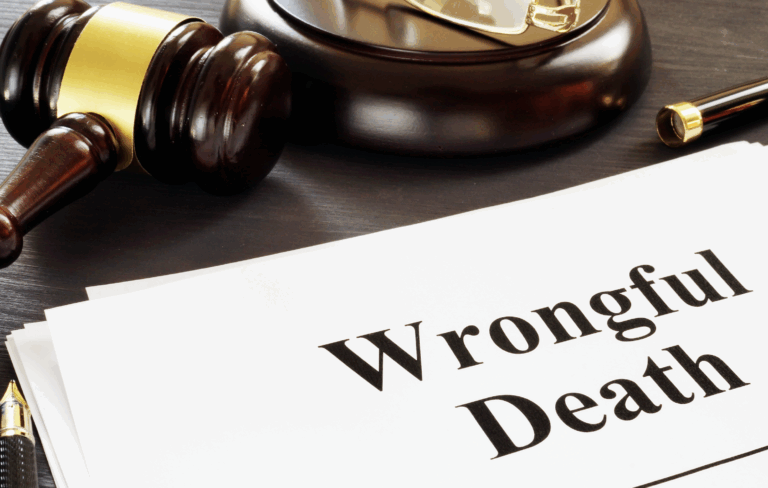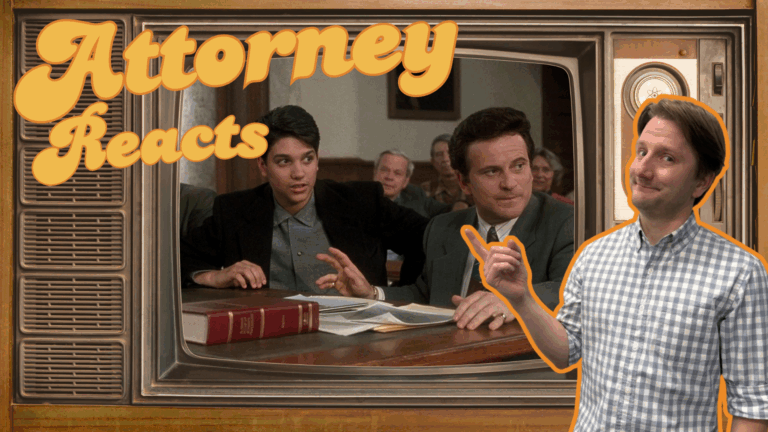Author: Shelby Benavidez
Contributing Attorney: Myranda Vaughn, attorney team lead
For professionals working in personal injury law, litigation remains one of the most critical yet often misunderstood phases of a case. It’s the point where strategy, preparation, and case management converge – and where a firm’s internal systems and communication practices are tested. At Daniel Stark Injury Lawyers, litigation isn’t treated as a last resort, but as a natural continuation of advocacy when pre-suit negotiations fail to deliver full value.
In this article, Myranda Vaughn, Daniel Stark attorney team lead, shares insights on when litigation becomes necessary, what drives that decision, and what both attorneys and organizations managing personal injury claims should understand about navigating this stage efficiently and effectively.
What Does Litigation Mean in a Personal Injury Case?
As Vaughn explains, litigation represents the transition from pre-suit negotiations to formal proceedings, initiated when it becomes clear that voluntary resolution isn’t possible.
The pre-suit phase of a personal injury case typically involves gathering evidence, corresponding with insurance companies, and attempting to reach a fair settlement without going to court. When those efforts fail, whether because the insurer refuses to pay fairly or key issues remain unresolved, litigation ensures the client’s rights are protected through the court system.
Early Warning Signs That a Case Is Heading Toward Litigation
There are telltale signs that a case may need to move from negotiation to litigation. One of the clearest red flags is when insurance companies demand extensive documentation before making even a preliminary offer. Vaughn notes that when an insurer requests a “laundry list” of records or seems unwilling to engage in reasonable negotiation, it’s often a sign that they’re not planning to offer fair value voluntarily.
Another signal is uncertainty about insurance coverage. If coverage details are unclear or an attorney suspects that additional coverage may exist, filing a lawsuit may be necessary to compel disclosure and ensure all potential avenues of recovery are explored.
“If we can’t confirm coverage or if we’re suspicious that there might be additional insurance coverage,” Vaughn said, “I suspect that it’s going to be a lawsuit that we need to file to evaluate the full scope of coverage and ensure we’re getting a fair settlement.”
Litigation, in these cases, becomes a tool for transparency and accountability.
Why Timing Matters: The Importance of Acting Early
Timing can be one of the most critical factors in deciding when to move a case toward litigation. Vaughn highlights preservation of evidence as a key reason to act promptly. Important records, such as surveillance footage, vehicle data, or cell phone records, are often only retained for a limited time. If an attorney waits too long, that evidence could be lost forever.
She also points to statutes of limitations, which in Texas, for example, give injured individuals only two years to file a lawsuit after a car accident. Waiting until the last minute can not only risk missing the filing deadline but also limit access to critical evidence that strengthens the case. As Vaughn explains, identifying the right time to file is about balancing strategy with urgency.
Weighing the Factors: When Is Litigation the Right Move?
Deciding whether to litigate isn’t always straightforward. Vaughn emphasizes that every case and every client is unique. Factors such as a client’s health, age, and overall ability to handle the demands of litigation play an important role in the decision.
For example, an elderly client or someone in poor health may not be well-suited for a lengthy court battle. In those cases, attorneys must carefully weigh the potential benefits of litigation against the client’s personal circumstances.
Cost is another important factor. Litigation comes with expenses: filing fees, expert witness costs, and affidavit preparation, among others. In some cases, these costs could outweigh the potential benefit of a marginally higher settlement. Vaughn notes that determining whether litigation is in a client’s best financial interest requires transparency and careful evaluation.
Balancing the Desire for Speed with the Need for Full Value
Clients naturally want their cases resolved quickly. The trauma of an accident and the stress of dealing with legal issues can make people eager to move on. Vaughn acknowledges this, but she also stresses the importance of patience.
She often reminds clients that quick settlements come at a price. “If you want to settle now, it’s going to be quick – it’s going to be dirty,” she explains, emphasizing that rushing the process can result in significantly lower compensation. Litigation, while slower, often leads to more thorough evaluations of damages and fairer settlements.
Still, Vaughn recognizes that not every case is ideal for litigation. Some clients have personal circumstances, such as a past criminal record, that could complicate a trial. In these cases, attorneys may recommend settling sooner to minimize risk. The goal is always to balance speed, value, and client well-being.
Client Decision-Making and Attorney Ethics
Even when an attorney believes litigation is the best course of action, the final decision rests with the client. Vaughn explains that attorneys have an ethical duty to follow their client’s wishes, as long as the client is fully informed of the consequences.
If a client insists on settling early, attorneys at Daniel Stark ensure that the client signs documentation acknowledging that they understand the potential drawbacks. This transparency helps protect both the client and the firm while maintaining trust in the attorney-client relationship.
Common Misconceptions About the Litigation Process
A frequent challenge in personal injury litigation is managing client expectations about how quickly their case will be resolved. According to Vaughn, many clients assume that filing suit will expedite their case and prompt insurers to act quickly. In reality, initiating litigation signals the start of a structured, often lengthy process.
“A lot of clients believe as soon as we get the petition on file that it’s going to move really fast from there… that the defense or insurance company is going to do the right thing, pay a fair amount, and it should be over quickly thereafter – which unfortunately is just the beginning,” Vaughn said.
Vaughn also cautions against viewing litigation as a guaranteed outcome. The process involves multiple procedural stages, including discovery, depositions, mediation, and in some cases, trial. Each requires strategy, resources, and time. She advises both clients and legal teams to approach litigation with patience and perspective, recognizing it as a strategic pathway to fair value rather than a shortcut to settlement.
While the majority of personal injury cases resolve through settlement, Vaughn stresses the importance of preparing clients for the possibility of trial. Popular media often portrays trials as brief, dramatic events, but the reality is considerably more complex and demanding.
“We’re not talking about a Matlock case that’s over in a day,” she said. “We’re talking about a full week of trial with weeks and weeks of preparation, and thousands of documents that have to be labeled to such precision that you can find them within seconds.”
Vaughn also underscores the personal dimension – clients must be ready for the level of scrutiny that comes with testifying, as details from their medical history, work life, and daily activities may all be examined in open court.
Despite the challenges, Vaughn reminds clients that trial can be essential to securing full and fair compensation. As she puts it, “It’s not easy, but it’s what we have to do to get you your full value.”
What Clients Should Ask Before Choosing Litigation
When asked what she wishes clients would ask more often, Vaughn points to a single, powerful question: “Is it really in my best interest to proceed forward with a lawsuit?”
While many clients focus on how quickly their case will move, she believes they should instead seek to understand the broader implications, including the time commitment, emotional toll, and potential outcomes. Vaughn also emphasizes the importance of informed decision-making. She provides clients with detailed information about every step, ensuring they never feel blindsided.
“I never want them to be ill-informed,” she says. “Even if it feels like too much information, I want them to understand exactly what to expect.”
Final Thoughts: Empowering Clients Through Information and Trust
For firms, carriers, and organizations involved in personal injury litigation, Vaughn’s perspective highlights an important reality: litigation should never be viewed as a breakdown in negotiation, but rather as a strategic step to safeguard a client’s rights and pursue full value.
Effective case management depends on transparent communication, realistic expectation-setting, and unwavering professional integrity. As Vaughn’s approach illustrates, successful outcomes are built on preparation, patience, and trust in both the process and the attorney-client relationship.




